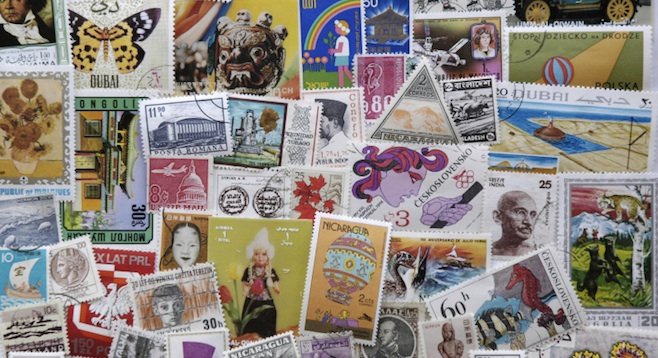 Facebook
Facebook
 X
X
 Instagram
Instagram
 TikTok
TikTok
 Youtube
Youtube

Heymatt:
Curious as to how an international letter works through the United States Postal Service? How does the USPS get paid and how much does the country receiving the letter get? Do both countries just have a “flat fee” program to expedite payment?
— Larry, South Mission Beach
International mailing is overseen by the Universal Postal Union, which maintains headquarters in Bern, Switzerland. The agency was created in 1874, before which time it was a royal pain to send mail around the world. For starters, you would have had to affix a stamp for every country your letter traveled through, which is totally ridiculous but probably the best they could do in a world where heroin was available over the counter. With the creation of the United Nations, the UPU became a specialized subset of that confederacy, despite the fact that both its age and reach are greater than that of the UN.
In terms of compensation for international mail, the standard solution is quite elegant. Participating nations pay what are called “terminal dues” based on the difference in weight mailed between the two countries. Let’s say, for the sake of argument, that 42,000 pounds of mail travel from Canada to Russia every year, but only 36,000 pounds go from Russia to Canada. The two countries call the 36,000 pounds a tit-for-tat exchange and Canada gives Russia a little payout to cover the extra 8000 pounds of Canadian mail that was delivered to Russian addresses. It’s a little bit more complicated than that in reality, mostly because magazines are heavy and the U.S. has special relationships with some countries, but for the most part it’s as ridiculously smart and simple as I’ve presented it.


Heymatt:
Curious as to how an international letter works through the United States Postal Service? How does the USPS get paid and how much does the country receiving the letter get? Do both countries just have a “flat fee” program to expedite payment?
— Larry, South Mission Beach
International mailing is overseen by the Universal Postal Union, which maintains headquarters in Bern, Switzerland. The agency was created in 1874, before which time it was a royal pain to send mail around the world. For starters, you would have had to affix a stamp for every country your letter traveled through, which is totally ridiculous but probably the best they could do in a world where heroin was available over the counter. With the creation of the United Nations, the UPU became a specialized subset of that confederacy, despite the fact that both its age and reach are greater than that of the UN.
In terms of compensation for international mail, the standard solution is quite elegant. Participating nations pay what are called “terminal dues” based on the difference in weight mailed between the two countries. Let’s say, for the sake of argument, that 42,000 pounds of mail travel from Canada to Russia every year, but only 36,000 pounds go from Russia to Canada. The two countries call the 36,000 pounds a tit-for-tat exchange and Canada gives Russia a little payout to cover the extra 8000 pounds of Canadian mail that was delivered to Russian addresses. It’s a little bit more complicated than that in reality, mostly because magazines are heavy and the U.S. has special relationships with some countries, but for the most part it’s as ridiculously smart and simple as I’ve presented it.
Comments